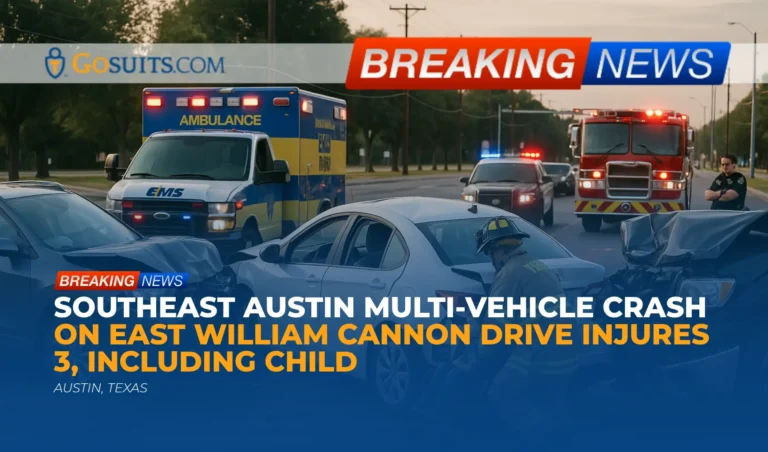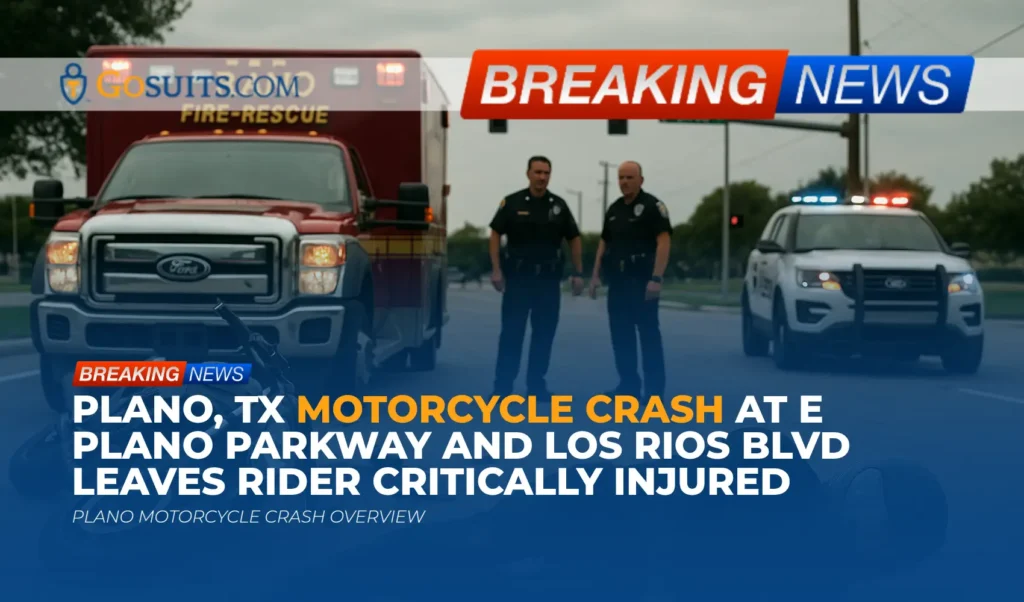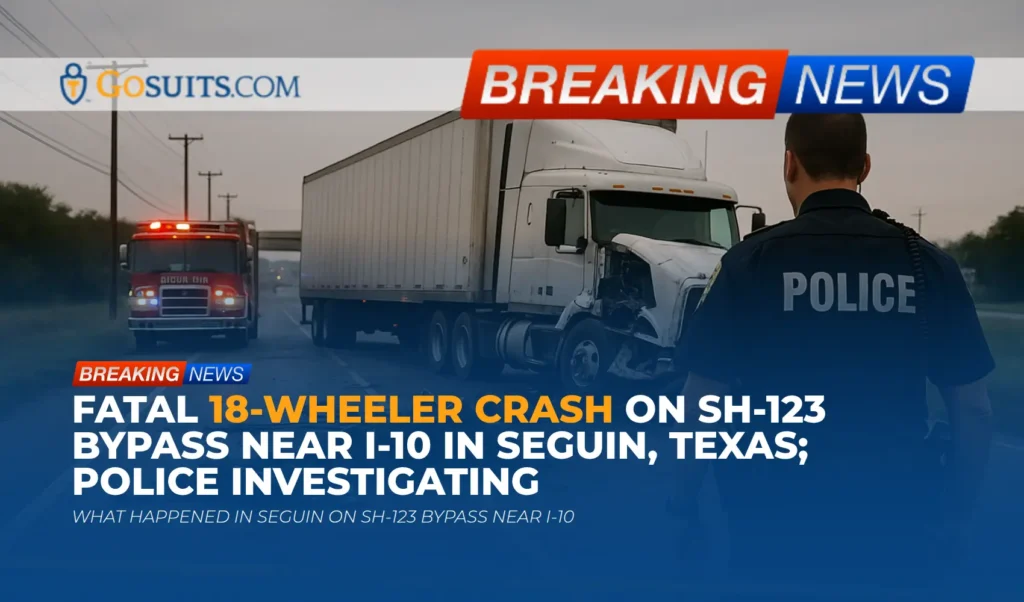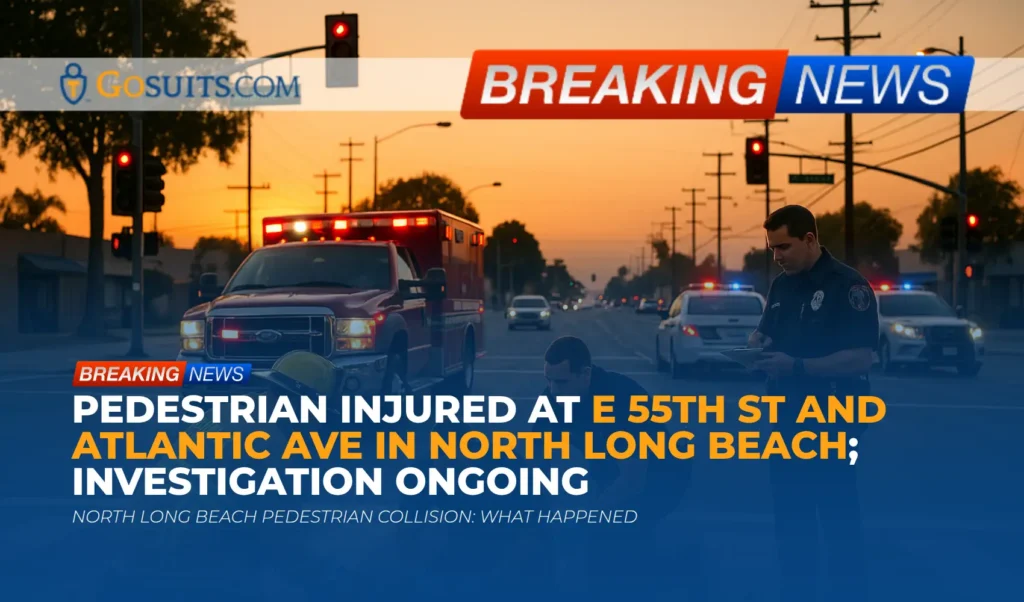- What We Know About the Southeast Austin Multi-Vehicle Crash
- Immediate Next Steps After a Serious Crash in Austin
- How to Obtain Official Records and Information
- Austin Police Department crash and incident reports
- State of Texas crash report through TxDOT
- Austin-Travis County EMS and Fire records
- Hospital records and federal privacy rights
- Travis County Medical Examiner information
- Traffic signals, cameras, and roadway data
- Potential Civil Liability in a Multi-Vehicle Collision
- Insurance Issues You May Encounter
- Rights and Timelines in Texas Injury Cases
- Child Passenger Safety and Crash Prevention
- Local Roadway Context: East William Cannon Drive
- What Costs Can Be Claimed After a Serious Crash
- Steps to Consider Before Speaking With Insurance
- Commentary from Gosuits Austin, Texas Personal Injury Attorney
- Why Taking Action Quickly Matters
What We Know About the Southeast Austin Multi-Vehicle Crash
A multi-vehicle collision occurred early Wednesday morning in southeast Austin, near the intersection of East William Cannon Drive and Branchwood Drive. According to information reported from the scene, Austin-Travis County EMS, Austin Fire, and the Austin Police Department responded shortly after 6:15 a.m. A rescue operation was required because one person was pinned in a vehicle. First responders reported that the pinned individual was awake and breathing and was successfully extricated from the vehicle.
Three people were transported to area hospitals: two adults to a south Austin hospital, and a child to Dell Children’s Medical Center. ATCEMS described one adult as having critical injuries and the other adult as having serious but non-life-threatening injuries. The child’s injuries were reported as serious but non-life-threatening. Law enforcement closed westbound lanes of William Cannon Drive in the immediate area while crews worked and expected those closures to be temporary.
At this time, the specific cause of the crash has not been publicly reported. In multi-vehicle collisions, investigators typically examine roadway evidence, vehicle damage patterns, witness statements, and any available traffic camera footage to determine how the crash occurred.
Immediate Next Steps After a Serious Crash in Austin
After an event like this, people often feel overwhelmed. The hours and days after a serious crash are important for health, safety, and documentation. The following steps are general guidance intended to help people protect their well-being and their rights.
- Prioritize medical care. Even if injuries feel minor, seek evaluation right away. Some internal or orthopedic injuries become more apparent over time. Follow discharge instructions and keep all records.
- Preserve evidence. Save photos or videos of the scene, vehicle damage, visible injuries, and road conditions. If possible, identify any nearby businesses or residences with cameras that may have captured the crash.
- Track expenses and symptoms. Keep a simple log of medical appointments, time missed from work or school, out-of-pocket costs, and day-to-day pain or limitations.
- Be cautious with statements. What is said to insurers can be used later to minimize or deny a claim. If an insurance adjuster calls, it is generally wise to consult a lawyer first.
- Request official records. Police crash reports, EMS records, and hospital charts are foundational documentation. Instructions and official links from the City of Austin, TxDOT, and other agencies are included below.
How to Obtain Official Records and Information
Official records help document what happened, who was involved, and how injuries were treated. The resources below are provided by government agencies.
Austin Police Department crash and incident reports
In Texas, officer-written crash reports are filed with the Texas Department of Transportation, but the Austin Police Department also holds related records such as incident reports, 911 call logs, and dispatch notes. Members of the public can submit requests to the City of Austin through its Public Information portal under the Texas Public Information Act.
- City of Austin Public Records Center: Submit a request for APD incident records, 911 audio, Computer Aided Dispatch logs, and certain video. Use the City’s portal at austintexas.gov/pir.
- Texas Public Information Act overview: The Office of the Attorney General explains rights and timelines under the Act at texasattorneygeneral.gov.
When submitting a request, include the date, time, location (East William Cannon Drive at Branchwood Drive), and any known report or incident numbers to help the agency locate records.
State of Texas crash report through TxDOT
Texas maintains official CR-3 crash reports through the TxDOT Crash Records Information System. Eligible parties can purchase a copy of the crash report online.
- TxDOT CRIS Purchase System: Find and purchase a CR-3 crash report by date, location, or involved party at cris.dot.state.tx.us/public/Purchase.
Crash reports typically become available after the investigating officer completes and submits the report to TxDOT. The report includes contributing factors noted by the officer, diagrams, and other data used by insurers and attorneys to evaluate liability.
Austin-Travis County EMS and Fire records
EMS and fire agencies create patient care reports and incident logs that can be important for understanding injuries and treatment. In Austin, these records can be requested through the City’s Public Records Center.
- EMS records: Request Austin-Travis County EMS patient care reports through the City of Austin Public Records Center at austintexas.gov/pir. Proof of identity or authorization is usually required for medical records.
- Fire incident records: Fire department incident reports, including rescue details, can also be requested via the Public Records Center at austintexas.gov/pir.
Hospital records and federal privacy rights
Patients and personal representatives have a right to access their medical records under federal law. The U.S. Department of Health and Human Services provides guidance on the right of access, including timelines and allowable fees.
- HIPAA Right of Access: Learn about patient access rights from HHS at hhs.gov.
Hospitals may require proper identification, proof of parental status for a minor’s records, or a HIPAA authorization form to release records.
Travis County Medical Examiner information
When crashes result in fatalities, the medical examiner investigates the cause and manner of death and maintains autopsy reports. Although the current incident involved serious injuries, families can contact the Travis County Medical Examiner’s Office for information if a death later occurs.
- Travis County Medical Examiner: Policies, contact information, and request procedures are available at traviscountytx.gov/medical-examiner.
Traffic signals, cameras, and roadway data
The City of Austin’s Transportation and Public Works Department manages signals and many roadway assets. Some traffic video is not retained for long. Requesting any potentially relevant traffic data quickly can be important.
- Transportation and Public Works: Learn about city transportation programs and submit records requests via the Public Records Center linked from austintexas.gov.
- Vision Zero program: City safety initiatives and data resources are outlined at austintexas.gov/department/vision-zero.
Potential Civil Liability in a Multi-Vehicle Collision
Determining responsibility in a multi-vehicle crash is fact specific. Investigators and insurers consider many factors, including speed, following distance, traffic signals, lane changes, and whether any driver failed to control speed or maintain a proper lookout. The presence of multiple vehicles can make the chain of events complex, but even in complex crashes, Texas law provides a framework for assigning fault.
- Negligence basics. Each driver owes a duty to operate their vehicle with ordinary care. A breach of that duty that causes injury can create civil liability for resulting damages.
- Comparative fault in Texas. Texas uses proportionate responsibility. A person can recover damages if they are not more than 50 percent responsible, but their recovery is reduced by their percentage of responsibility. See Texas Civil Practice and Remedies Code Chapter 33 at statutes.capitol.texas.gov.
- Joint and several considerations. Under certain circumstances, a defendant more than 50 percent responsible may be jointly and severally liable for recoverable damages under Texas law. See Chapter 33.
- Employer liability. If a driver was acting in the course and scope of employment, an employer may be responsible for their employee’s negligence. This often arises with commercial deliveries or service vehicles.
- Roadway and signal factors. If a defective roadway condition or malfunctioning signal contributed to the crash, claims may implicate a governmental entity. Special notice rules and liability limitations apply in those rare situations, discussed further below.
Because early statements can shape how insurers and others assign fault, many families choose to gather the official records first and consider consulting counsel before giving recorded statements to insurance adjusters.

Insurance Issues You May Encounter
Insurance coverage and claim handling can be confusing after a serious collision. Understanding common coverages found in Texas policies can help people make informed choices. The Texas Department of Insurance provides consumer guidance on auto insurance coverages.
- Liability coverage. Pays for injury and property damage the at-fault driver causes to others, up to policy limits.
- PIP and MedPay. Personal Injury Protection can cover medical bills and a portion of lost wages for people in the insured vehicle, regardless of fault. Medical Payments coverage may cover medical bills. See TDI’s consumer guide at tdi.texas.gov.
- UM/UIM. Uninsured and underinsured motorist coverage can apply when an at-fault driver has no insurance or not enough insurance.
- Property damage. Collision coverage can pay for repairs to your own vehicle, minus any deductible. Diminished value claims may also arise in some cases.
Insurers often ask for recorded statements early. People sometimes feel pressured to agree. Before speaking on a recorded line or signing medical authorizations, consider consulting an attorney to understand the scope of what is being asked. What is said to an insurer can be used later to dispute injuries or assign more fault than is fair.
Rights and Timelines in Texas Injury Cases
Texas law sets deadlines for bringing civil claims. Missing a deadline can limit or bar recovery. These are general rules and may vary based on the circumstances.
- Two-year statute for injury. In most Texas personal injury matters, the statute of limitations is two years from the date of the incident. See Texas Civil Practice and Remedies Code § 16.003 at statutes.capitol.texas.gov.
- Wrongful death. Generally two years as well, subject to specific rules. See § 16.003 and the Texas Wrongful Death Act.
- Minors and tolling. For minors, Texas law may toll certain limitations while the person is under a legal disability such as minority. See Civil Practice and Remedies Code § 16.001 at statutes.capitol.texas.gov.
- Claims against governments. If a governmental entity is potentially involved, Texas Tort Claims Act notice provisions may require written notice within six months, describing the incident and damages. See § 101.101 at statutes.capitol.texas.gov.
Deadlines are only one reason to act promptly. Evidence can be lost, and businesses may routinely overwrite surveillance video within days or weeks. Early preservation letters can help safeguard vital information.
Child Passenger Safety and Crash Prevention
Because a child was reported injured in this crash, it is worth highlighting child passenger safety in Texas. Proper restraint use significantly reduces the risk of serious injury to children in crashes. Texas law requires that children under a certain age be secured in an appropriate child safety seat, and all vehicle occupants must be properly restrained.
- Texas child seat law. Texas Transportation Code § 545.412 requires child passengers to be secured in a child passenger safety seat system according to the manufacturer’s instructions. See the statute at statutes.capitol.texas.gov.
- Seat belt law. Texas Transportation Code § 545.413 requires seat belt use by vehicle occupants. See the statute at statutes.capitol.texas.gov.
- National guidance. The National Highway Traffic Safety Administration provides guidance on selecting and installing child safety seats and booster seats at nhtsa.gov.
Families often ask whether a child seat should be replaced after a crash. Many manufacturers recommend replacing seats after moderate or severe collisions. Some insurers will reimburse for a replacement if coverage applies. Keep all receipts and the seat itself until a claim decision is made.
Local Roadway Context: East William Cannon Drive
East William Cannon Drive is a busy corridor in southeast Austin that carries commuters, school traffic, and local neighborhood travel during the morning hours. Intersections along this stretch can experience congestion at peak times, increasing the importance of safe following distances and attention to changing signal phases.
The City of Austin’s Vision Zero program focuses on reducing severe injuries and deaths on local roads through engineering, education, and enforcement. Information about safety strategies and data-driven projects in Austin is available through the City’s program page at austintexas.gov. While each crash is unique, Vision Zero emphasizes that small choices like reducing speed and scanning for hazards can have a large impact on outcomes when traffic is heavy.
What Costs Can Be Claimed After a Serious Crash
Personal injury claims in Texas may include both economic and noneconomic losses related to the incident. The specific categories that apply depend on the facts and available proof.
- Medical expenses. Emergency transport, hospital care, diagnostic imaging, surgery, medications, physical therapy, and follow-up treatment.
- Future medical needs. Ongoing therapy, specialist visits, medical devices, and anticipated procedures supported by medical opinions.
- Lost income and reduced earning capacity. Time missed from work and longer-term impacts on job duties or career trajectory.
- Household or childcare services. Replacement services that became necessary due to injuries.
- Pain, suffering, and physical impairment. Physical pain, emotional distress, loss of enjoyment of activities, and limitations on daily life.
- Property damage. Vehicle repairs or replacement, rental car costs, towing, and diminished value in some circumstances.
- For children. Claims may consider school disruption, activities the child can no longer participate in, and long-term effects as documented by pediatric providers.
If a minor is involved, Texas courts often require additional safeguards for settlements. Minors are typically represented in court by a parent or guardian as “next friend” and courts may review settlements to ensure the child’s interests are protected. See Texas Rules of Civil Procedure regarding minors and next friends at txcourts.gov.
Steps to Consider Before Speaking With Insurance
Insurance adjusters may contact people quickly after a crash to gather statements and authorization forms. Those materials can shape the outcome of a claim. The following considerations are intended to help people protect themselves.
- Consult a lawyer first. Before contacting an insurance company or giving a recorded statement, consider consulting an attorney for a free consultation to understand rights and obligations. What is shared with an insurer can be used later to dispute fault or minimize injuries.
- Limit authorizations. Broad medical authorizations can open access to years of unrelated medical history. Narrow, time-limited authorizations tied to the crash are often sufficient.
- Coordinate property damage and injury claims carefully. Even discussions about vehicle repairs can lead to questions about how the crash occurred. Keep notes of all communications and do not speculate about fault.
- Request written communication. Ask for important adjuster communications in writing to reduce misunderstandings and preserve a clear record.
Commentary from Gosuits Austin, Texas Personal Injury Attorney
Our thoughts are with the adults and the child reported injured in this southeast Austin collision. Serious crashes shake families and neighborhoods, and we hope each person receives the care and support they need. This discussion is shared for educational purposes to help the community understand general processes and rights after a multi-vehicle crash.
Based on publicly available details, first responders did an admirable job executing a timely rescue and ensuring rapid transport for higher-level care. In multi-vehicle collisions, fault can be complex, and early narratives do not always reflect the full picture. Thorough fact gathering, including the TxDOT crash report, EMS records, scene photographs, and any nearby camera footage, is essential before anyone reaches firm conclusions about responsibility.
Insurance companies and large corporations have adjusters, investigators, and counsel who move quickly to protect their financial interests. They may request broad medical authorizations, push for early recorded statements, or suggest quick settlements before the full scope of injuries is known. People who are recovering from injuries often do not realize how statements can be interpreted against them, how comparative responsibility rules can be used to reduce payouts, or how future medical needs should be evaluated. A thoughtful, well-documented approach helps level the playing field.
Speaking with a seasoned personal injury attorney for a free consultation can help clarify options, protect against common pitfalls, and set a plan for preserving evidence. An initial conversation can provide guidance about working with insurers, documenting injuries, and meeting important deadlines, without any obligation to move forward.
Why Taking Action Quickly Matters
Time matters after a serious crash. Certain steps can protect health, preserve proof, and reduce later disputes about what happened.
- Secure medical evaluation immediately. Early diagnosis and treatment can prevent complications. Medical records created right away also document the link between the crash and injuries.
- Request official records as soon as they are available. Police, EMS, and hospital records are the foundation of any insurance claim. Government portals often have processing times. Submitting requests now helps avoid delays later.
- Preserve video and vehicle data. Many businesses overwrite surveillance footage within 7 to 30 days. Modern vehicles may store event data that can be lost if a car is repaired or salvaged without preservation. Preserving evidence early can make a major difference in proving what occurred.
- Document financial impact. Keep receipts and a simple ledger of costs, including co-pays, mileage to medical visits, and lost time from work. Clear documentation supports reimbursement claims.
- Be cautious with insurance communications. Recorded statements and broad authorizations can complicate claims. Consult an attorney first to understand the implications and to avoid avoidable mistakes.
- Know the legal timelines. Texas has strict deadlines for injury claims, and special notice rules may apply in limited circumstances. Acting promptly helps ensure those time limits do not become a barrier.

Key Government Resources Mentioned
- City of Austin Public Records Center for APD, EMS, fire, and other city records
- Texas DOT Crash Records Information System for official CR-3 crash reports
- Texas Public Information Act overview from the Office of the Attorney General
- HIPAA Right of Access from the U.S. Department of Health and Human Services
- Travis County Medical Examiner Office for autopsy and death investigation information
- Texas Civil Practice and Remedies Code Chapter 33 on proportionate responsibility
- Texas Civil Practice and Remedies Code Chapter 16 on limitation periods and tolling
- Texas Tort Claims Act notice provision § 101.101
- Texas Transportation Code § 545.412 and § 545.413 on child seats and seat belts
- Texas Department of Insurance auto insurance guide
- City of Austin Vision Zero program
Helpful Contacts and Where to Inquire
For those seeking to check on records or ask procedural questions, the following official pathways can help. When making contact, include the incident date, time, and location to assist staff in locating the right materials.
- Austin Police Department records: Use the City’s Public Records Center at austintexas.gov/pir to request incident reports, 911 audio, or dispatch logs.
- TxDOT crash report: Search and purchase the official CR-3 report via cris.dot.state.tx.us/public/Purchase.
- Austin-Travis County EMS patient care records: Request through the City’s Public Records Center at austintexas.gov/pir. As medical records, these typically require proof of identity or authorization.
- Travis County Medical Examiner Office (for fatalities): Processes and policies are posted at traviscountytx.gov/medical-examiner.
- Transportation and signal inquiries: The City’s Transportation and Public Works information page is at austintexas.gov. Records requests should be submitted through the Public Records Center.
These government portals are the most reliable way to obtain official documents. Response times vary based on request volume and the type of record.






